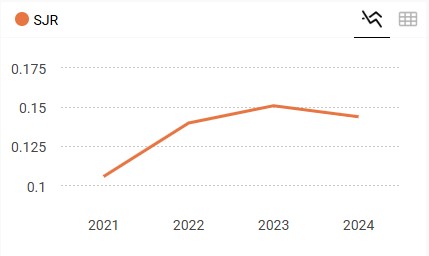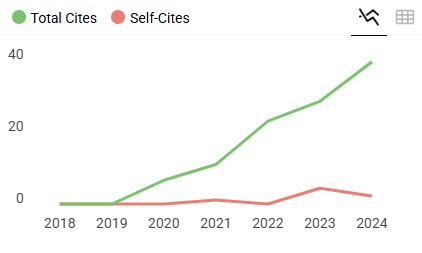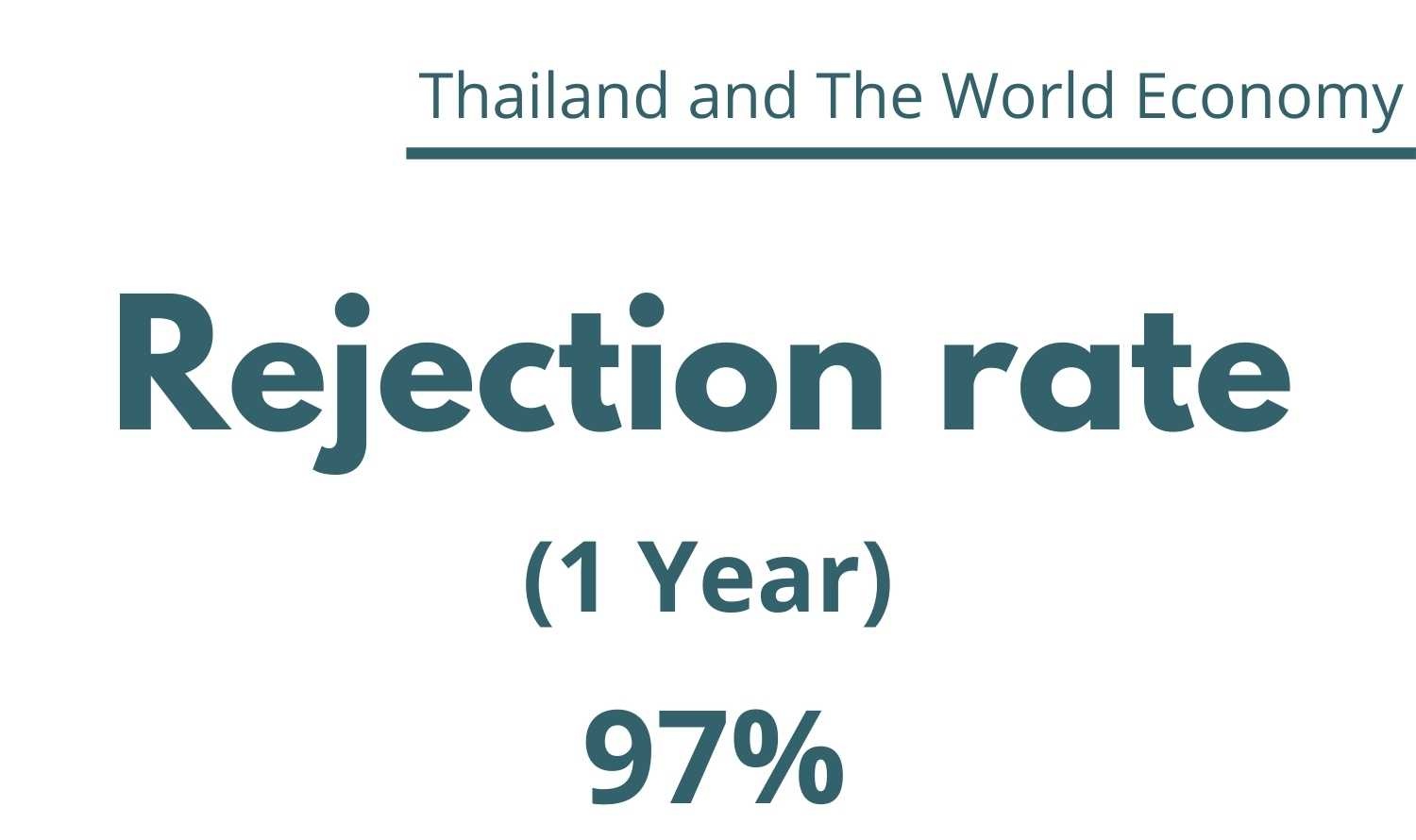การเปลี่ยนแปลงประสิทธิภาพในการจัดการของโรงแรมในจังหวัดเชียงใหม่
Keywords:
Managerial Efficiency Change, Data Envelopment Analysis, Malmquist Productivity ApproachAbstract
The aim of this article is to estimate managerial efficiency changes of 43 hotels in Chiang Mai, Thailand during 2002 and 2006. The study applied Data Envelopment Analysis (DEA) proposed by Banker et al. (1984) to examine managerial efficiency. Malmquist Productivity Approach developed by Färe et al. (1992) was employed to evaluate the change of managerial efficiency.
The results show that small hotels achieved higher managerial efficiency than large hotels and approximately a half of hotel achieved maintaining managerial efficiency but lack on improving managerial technology, so result in decreased of total factor productivity. Moreover, improving managerial efficiency is one of the factors that increase their competitiveness in short term while improving managerial technology is the factor that important for maintaining competitiveness in the long term.
References
2. Anderson, R.I., Fok, R. and Scott, J. (2000) Hotel industry efficiency: An advanced linear programming examination, American Business Review, 18(1), pp. 40-48.
3. Baker, M. and Riley, M. (1994) New perspectives on productivity in hotels: Some advances and new directions, International Journal of Hospitality Management, 13(4), pp. 297-311.
4. Banker, R.D., Charnes, A. and Cooper, W.W. (1984) Some models for estimating technical and scale inefficiencies in data envelopment analysis, Management Science, 30(9), pp. 1078-1092.
5. Barros, C.P. (2004) A stochastic cost frontier in the Portuguese hotel industry, Tourism Economics, 10(2), pp. 177-192.
6. Barros, C.P. and Alves, P. (2004) Productivity in tourism industry, International Advances in Economic Research, 10(3), pp. 215-225.
7. Barros, C.P. and Athanassiou, M. (2004) Efficiency in European Seaports with DEA: Evidence from Greece and Portugal, Maritime Economics & Logistics, 6(2) pp. 122-140.
8. Barros, C.P. and Mascarenhas, M.J. (2004) Technical and allocative efficiency in a chain of small hotels, International Journal of Hospitality Management, 24(3), pp. 415-436.
9. Barros, C.P. (2005a) Evaluating the efficiency of a small hotel chain with a Malmquist productivity index, International Journal of tourism research, 7(3), pp. 173-184.
10. Barros, C.P. (2005b) Measuring efficiency in the hotel sector, Annals of Tourism Research, 32(2), pp. 456-477.
11. Barros, C.P. (2006) Analysing the rate of technical change in the Portuguese hotel industry, Tourism Economics, 12(3). pp. 325-346.
12. Barros, C.P. and Santos, C.A. (2006) The measurement of efficiency in Portuguese hotels with DEA, Journal of Hospitality and Tourism Research, 30(3), pp. 378-400.
13. Barros, C.P. and Dieke, P.U.C. (2008) Technical efficiency of African hotels, International Journal of Hospitality Management, 27(3), pp. 438-447.
14. Barros, C.P., Peypoch, N. and Solonandrasana, B. (2009) Efficiency and productivity growth in hotel industry, International Journal of Tourism Research, in Press, Corrected Proof.
15. Brotherton, B. and Mooney, S. (1992) Yield management progress and prospects, International Journal of Hospitality Management, 11(1), pp. 23-32.
16. Brown, J.R. and Ragsdale, C.T. (2002) The competitive market efficiency of hotel brands: An application of data envelopment analysis, Journal of Hospitality and Tourism Research, 26(4), pp. 260-332.
17. Caves, D.W., Christensen, L.R. and Diewert, W.E. (1982) The economic theory of index numbers and the measurement of input, output and productivity, Econometrica, 50(6), pp. 1393-1414.
18. Charnes, A., Cooper, W.W. and Rhodes, E. (1978) Measuring the efficiency of decision making units, European Journal of Operational Research, 2(6), pp. 429-444.
19. Chen, C. (2007) Applying the stochastic frontier approach to measure hotel managerial efficiency in Taiwan, Tourism Management, 28(3), pp. 696-702.
20. Chiang, W., Tsai, M. and Wang L.S. (2004) A DEA evaluation of Taipei hotels, Annals of Tourism Research, 31(3), pp. 712-715.
21. Donaghy, K., McMahon, U. and McDowell D. (1995) Yield management: An overview, International Journal of Hospitality Management, 14(2), pp. 1339-1350.
22. Färe R., Grosskopf S., Yaisawarng S., Li S. and Wang, Z. (1990) Productivity growth in Illinois Electric Utilities, Resources and Energy, 12(4), pp. 383-398.
23. Färe R., Grosskopf S., Lindgren, B. and Roos, P. (1992) Productivity change in Swedish pharmacies 1980-1989: A non-parametric Malmquist approach, Journal of Productivity Analysis, 3(1), pp. 85-101.
24. Farrell, M.J. (1957) The measurement of productive efficiency, Journal of the Royal Statistical Society, Series A (General), 120(3), pp. 253-290.
25. Hjalmarsson, L., Veiderpass A. and Mork, K.A. (1992) Productivity in Swedish electricity retail distribution, Scandinavian Journal of Economics, 94, pp. 193-209.
26. Hwang S.N. and Chang T.Y. (2003) Using data envelopment analysis to measure hotel managerial efficiency change in Taiwan, Tourism Management, 24(3), pp. 357-369.
27. Johns, N., Howcroft, B. and Drake, L. (1997) The use of data envelopment analysis to monitor hotel productivity, Progress in Tourism and Hospitality Research, 3(2), pp. 199-127.
28. Malmquist, S. (1953) Index numbers and indifference surfaces, Trabajos de Estadistica, 4, pp. 209-242.
29. Min, H., Min, H. and Joo S. (2008) A data envelopment analysis-based balanced scorecard for measuring the comparative efficiency of Korean luxury hotels, International Journal of
30. Quality & Reliability Management, 25(4), pp. 349-365.
31. Morey, R. and Dittman, D. (1995) Evaluating a Hotel GM’s performance: A case study in benchmarking, Cornell Hotel Restaurant and Administration Quarterly, 36(5), pp. 30-35.
32. Önüt, S. and Soner S. (2006) Energy efficiency assessment for the Antalya Region hotels in Turkey, Energy and Buildings, 38(8), pp. 946-971.
33. Price, C.W. and Weyman-Jones, T. (1996) Malmquist indices of productivity change in the UK gas industry before and after privatization, Applied Economics, 28(1), pp. 29-39.
34. Shang, J., Hung, W., Lo, C. And Wang, F. (2008) Ecommerce and hotel performance: Threestage DEA analysis, The Service Industries Journal, 28(4), pp. 529-540.
35. Tsaur, S. (2001) The operating efficiency of international tourist hotels in Taiwan, Asia Pacific Journal of Tourism Research, 6(1), pp. 73-81.
36. Yu, M. and Lee B.C.Y. (2009) Efficiency and effectiveness of service business: Evidence from international tourist hotels in Taiwan, Tourism Management, in Press, Corrected Proof.
37. Cooper, W.W., Seiford L.M. and Zhu, J. (2004) Handbook on Data Envelopment Analysis, (Springer: Kluwer Academic Publishers, Boston).
38. มิ่งสรรพ์ ขาวสอาด, นุกุล เครือฟู และอัครพงศ์ อั้นทอง (2548) อุตสาหกรรมโรงแรมของประเทศไทย (สถาบันวิจัยสังคม มหาวิทยาลัยเชียงใหม่)
39. อัครพงศ์ อั้นทอง (2548) คู่มือการใช้โปรแกรม DEAP 2.1 สำหรับการวิเคราะห์ประสิทธิภาพด้วยวิธีการ Data Envelopment Analysis (สถาบันวิจัยสังคม มหาวิทยลัยเชียงใหม่)
40. ภารตี ไกรสิทธิ์ (2548) การศึกษาโครงสร้าง พฤติกรรม และผลการดำเนินงานของอุตสาหกรรมท่องเที่ยวในจังหวัดเชียงใหม่, วิทยานิพนธ์ระดับปริญญาโท. คณะเศรษฐศาสตร์, มหาวิทยาลัยเชียงใหม่.
41. อัครพงศ์ อั้นทอง (2547) ประสิทธิภาพการดำเนินงานของโรงแรมและเกสต์เฮ้าส์ในจังหวัดภาคเหนือตอนบนของไทย, เอกสารประกอบการบรรยายพิเศษ (คณะวิทยาการจัดการและสารสนเทศ, มหาวิทยาลัยนเรศวร, พิษณุโลก)










